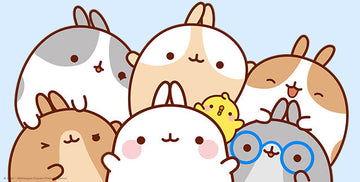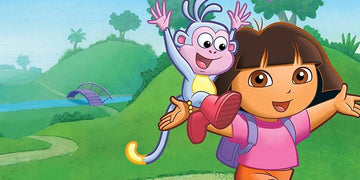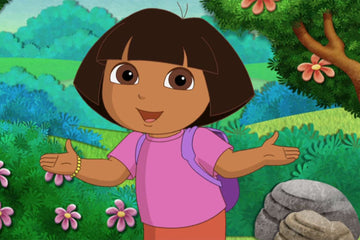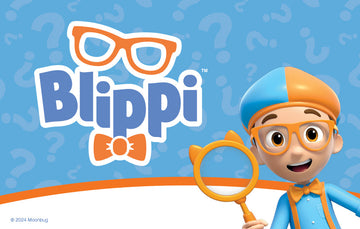Introduction
Ever wondered why a pacifier (or dummy) is such a lifesaver for parents and a comfort for babies? These tiny tools mimic the soothing motion of sucking, helping babies calm down and feel secure. Yet, when it's time to wean off, things can get tricky.
Common Challenges:
- Emotional Attachment: Babies often form strong bonds with their pacifiers.
- Sleep Disruptions: Removing the pacifier can initially interfere with sleep patterns.
- Resistance to Change: Toddlers may resist giving up their comforting dummies.
In this article, we're diving into a mix of expert advice, personal stories, and practical techniques to help you and your little one smoothly transition away from the pacifier. From understanding the impact on health to recognizing readiness signs and exploring tried-and-true methods, we've got you covered.
By the way, if you're looking for high-quality children's clothing during this transition phase, Sandilake Clothing offers comfy yet stylish baby bodysuits that are perfect for both playtime and bedtime. Their designs are crafted from super soft fabric to keep your little one comfortable while flaunting bold designs and cheeky slogans that shout personality. Unleash the sass with our vibrant collection of baby bodysuits!
The Impact of Pacifier Use on Baby Teeth, Speech Development, and Sleep Quality
Pacifiers can be a lifesaver in soothing a fussy baby, but using them for too long can have some unwanted side effects on their health. Let's explore a few areas where pacifiers might affect your little one's development.
Baby Teeth and Oral Health
One main concern with extended pacifier use is its effect on baby teeth. Dental experts warn that using a pacifier for an extended period can cause:
- Misalignment of teeth
- Incomplete eruption of teeth
- Changes in the shape of the mouth

These problems occur because constant sucking can push teeth out of their natural position. This misalignment may require orthodontic treatment later on. To mitigate these issues, it's important to choose the right pacifier for your child and limit its usage.
Speech and Language Development
Another potential issue is connected to speech and language development. When a child depends heavily on a pacifier, it may restrict their tongue movements. This can delay speech as they may not practice babbling or making sounds as much as they should. To encourage language development during the weaning process, you can:
- Encourage more talking and singing activities
- Introduce books that focus on speech sounds
- Practice mouth exercises with your child
Sleep Issues
While pacifiers initially help calm babies to sleep, relying on them too much can disturb healthy sleep patterns. Children may wake up multiple times at night if they can't find their pacifier. Strategies for promoting better sleep without a pacifier include:
- Establishing a consistent bedtime routine
- Offering other comfort objects like a favorite blanket or stuffed animal
- Gradually reducing pacifier use during naps before addressing nighttime sleep
Understanding these effects helps us make informed decisions about when and how to wean our kids off their beloved pacifiers. If you're looking for high-quality kids' gear for various occasions, including Independence Day celebrations, you can explore a collection of best-sellers or check out their vibrant and fun Independence Day gear collection. From patriotic T-shirts and onesies to festive accessories, these outfits are designed to make your little ones shine.".
Understanding the Readiness Signs: Is Your Child Ready to Say Goodbye to the Pacifier?
Determining when your child is ready to wean off the pacifier depends on their age and cognitive development. Here are some key factors to consider:
1. Age and Cognitive Maturity
Throughout toddlerhood, children reach various age-appropriate milestones that can help signal their readiness. Here's what to look for:
Ages 1-2
At this stage, children start understanding cause-and-effect relationships better. They may not fully grasp complex reasoning but can understand simple explanations.
Ages 2-3
As cognitive abilities improve, toddlers become more capable of following instructions and understanding abstract concepts like "big kids don't need pacifiers."
Recognizing these developmental markers can help you gauge the right time to start the weaning process. It's also important to observe other signs of readiness such as:
- Communication Skills: Can your child communicate their needs effectively without relying on the pacifier?
- Independence: Is your child showing signs of independence in other areas, such as eating or dressing themselves?
These indicators suggest that your toddler may be cognitively prepared to understand and accept the idea of giving up their pacifier.
During this significant transition phase, it's essential to make sure your child feels confident and comfortable. That's where stylish yet cozy clothing can play a role. Sandilake Clothing offers a fantastic range of outfits designed especially for toddlers. Their clothes are perfect for this stage of growing independence and new milestones.
Check out some options here:
2. Interest in Other Comfort Objects
Another sign that your child may be ready to give up the pacifier is if they start becoming more attached to other comfort objects. As they become more emotionally mature, many toddlers develop a preference for stuffed animals, blankets, or other soft toys over their pacifier. These transitional objects can provide similar comfort and security without the potential downsides associated with prolonged pacifier use.
Here are some tips for encouraging this shift:
- Introduce New Comfort Items: Gradually introduce a favorite blanket or stuffed animal during nap times or bedtime.
- Positive Association: Create positive associations with these new comfort items by including them in comforting routines like reading bedtime stories or cuddling.
By recognizing these readiness signs—age and cognitive maturity along with interest in other comfort objects—you can better plan for a smoother weaning process.
The transition from pacifier to another object like a stuffed toy often happens naturally. You might notice your child seeking out their favorite teddy or blanket during stressful times or bedtime. These transitional objects serve as a source of security and familiarity, making them ideal substitutes.

To aid this transition, you can introduce new comfort objects during daily routines. Offering choices can empower your little one, making them feel more in control of the process. For instance, Sandilake Clothing offers a delightful range of children’s clothing and accessories that could be perfect for pairing with your child's new favorite comfort item.
Encouraging this shift not only supports emotional growth but also helps ease the weaning process off the pacifier, creating a smoother path towards independence.
Tried and Tested Methods to Stop Dummy Use: Expert Advice
1. Dental Perspective: Minimizing Risks, Maximizing Oral Health
When it comes to breaking the pacifier habit, dentists often have a treasure trove of advice. They emphasize the importance of stopping pacifier use to prevent potential dental issues like misaligned teeth and improper oral development.
Gradual Reduction
One effective technique is the gradual reduction method. Instead of taking away the pacifier all at once, start by limiting its use during specific times of the day. Perhaps you allow it only during naps and bedtime initially. Gradually, you can reduce this further to just bedtime and eventually phase it out completely.
Positive Reinforcement
Dentists also recommend using positive reinforcement to encourage your child to give up their pacifier. Celebrate small milestones with praise or rewards. For instance, if your child goes without their pacifier for an entire morning, reward them with extra playtime or a small treat.
Dental Health Check-ins
Regular dental check-ups can help monitor any potential impact on your child's teeth and provide timely advice tailored to their specific needs. Dentists can offer customized strategies based on how your child's teeth are developing and provide professional insights into making the weaning process smoother.
Tasty Distractions
Sometimes, offering fun alternatives can distract your child from wanting their pacifier. Crunchy snacks like carrot sticks or apple slices not only divert attention but also promote healthy chewing habits which are beneficial for jaw development.
Creating a Pacifier-Free Environment
Another tip is to create an environment that doesn't remind your child of the pacifier. Keep them engaged with activities that require both hands, such as building blocks or drawing. This keeps their mind off the dummy and helps build new routines without its presence.
By following these expert tips from dentists, you can help ensure that your child's transition away from the pacifier is smooth and supportive of their oral health.
2. Supporting Speech Skills: Encouragement and Play-Based Interventions
Speech therapy plays a crucial role in helping children transition away from pacifier use. Pediatric dentists and speech therapists often work together to ensure that both dental health and language development are optimized during this process.
Speech Development Techniques:
- Encouraging Babbling and Talking: During playtime, it's important to keep the pacifier out of your child's mouth as much as possible. This encourages them to make more sounds and early speech attempts, which are essential for building their communication skills.
- Interactive Storytime: Reading books together is a wonderful way to bond with your child while also promoting their listening and speaking abilities. Choose books with repetitive phrases or rhymes so that they can easily join in and participate.
- Role-Playing Games: Simple pretend play scenarios can be a fun and effective way to motivate your child to use words instead of relying on the pacifier. For example, you can pretend to go grocery shopping and introduce new vocabulary words while taking turns in conversation.
Speech Therapists' Strategies:
- Visual Cues: Using visual aids such as picture cards or visual schedules can greatly assist children in understanding daily routines without always needing verbal instructions. This helps improve their comprehension skills and eventually supports their ability to express themselves.
- Positive Reinforcement: Acknowledging and praising your child whenever they choose to use words instead of the pacifier is essential for building their confidence in speaking. Simple rewards or sticker charts can be effective tools in reinforcing this positive behavior.
Pediatric Dentists' Recommendations:
- Monitoring Oral Habits: Regular dental check-ups are important for ensuring that prolonged pacifier use doesn't negatively impact the alignment of your child's teeth. Your dentist may also provide specific exercises or recommendations to help strengthen their oral muscles.
By incorporating these strategies into your daily routine, you're not only helping your child say goodbye to the pacifier but also laying a solid foundation for their overall speech development.
Personal Experiences: How Real Parents Navigated the Pacifier Weaning Challenge
I’ve had countless conversations with parents who’ve tackled the pacifier dilemma head-on, each with their unique twist on the approach. Here are some stories that stood out.
Sarah and the "Dummy Fairy"
One mom, Sarah, shared how her son was deeply attached to his pacifier. She introduced the concept of a "Dummy Fairy" who would take the pacifiers to new babies and leave a little gift in return. Her son eagerly left his pacifiers under his pillow and woke up to find a new toy car waiting for him. The excitement of the fairy’s visit made the transition smooth and memorable.

James and the Reward Chart
Another parent, James, opted for a reward chart system. He explained to his daughter that every night she slept without her pacifier, she’d earn a sticker. After collecting ten stickers, they went on a special trip to the zoo. This method not only helped with weaning but also taught valuable lessons about patience and rewards.
Emma's Gradual Reduction Approach
Emma found success with gradual reduction. She started by limiting pacifier use to nap times and bedtime only. Over a few weeks, she slowly reduced these instances until her child no longer needed it at all. The key was consistency and lots of praise for her child’s progress.
Each of these parents highlighted an essential truth: what works for one child might not work for another. Whether you try the Dummy Fairy, a reward chart, or gradual reduction, finding what resonates with your child is crucial.
Remember, every child is different, so don't hesitate to mix and match strategies or come up with your own creative solutions.
Conclusion
Dealing with the pacifier issue early on can make a big difference. It's important to address this aspect of your child's growth to prevent potential problems with teeth alignment, speech delays, and disrupted sleep patterns. Every step in the pacifier weaning journey is a milestone in parenting, and it's crucial to approach it with patience and understanding.
When you’re facing these parenting challenges, having reliable resources can be incredibly helpful. Sandilake Clothing offers high-quality children’s clothing that’s perfect for this transitional phase. Their comfortable yet stylish designs ensure your little one stays cozy whether they’re playing or sleeping.
For those interested in learning more about Sandilake Clothing and supporting their journey, take a moment to visit their website. You might just find the perfect outfit that adds a bit of sparkle to your child’s day while you both tackle the pacifier weaning adventure together.





